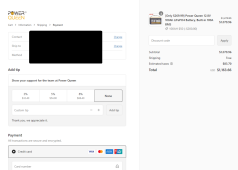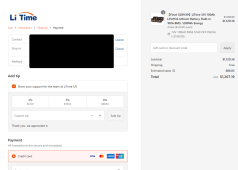AlpineJoe
Solar Enthusiast
- Joined
- Jun 13, 2022
- Messages
- 211
I am looking to shed some of my continuous house loads to a DIY solar inverter setup. I'll be running a Samlex 600W 24V input inverter from a pair of LiFePO4 budget 100AH 12V batteries and my two choices are LiTime and Power Queen. Both appear to be identical in capacity, current rating, and even size and weight. Price is within $20/each between the two. Is there a reason I should get LiTime (more expensive) over the Power Queen?






